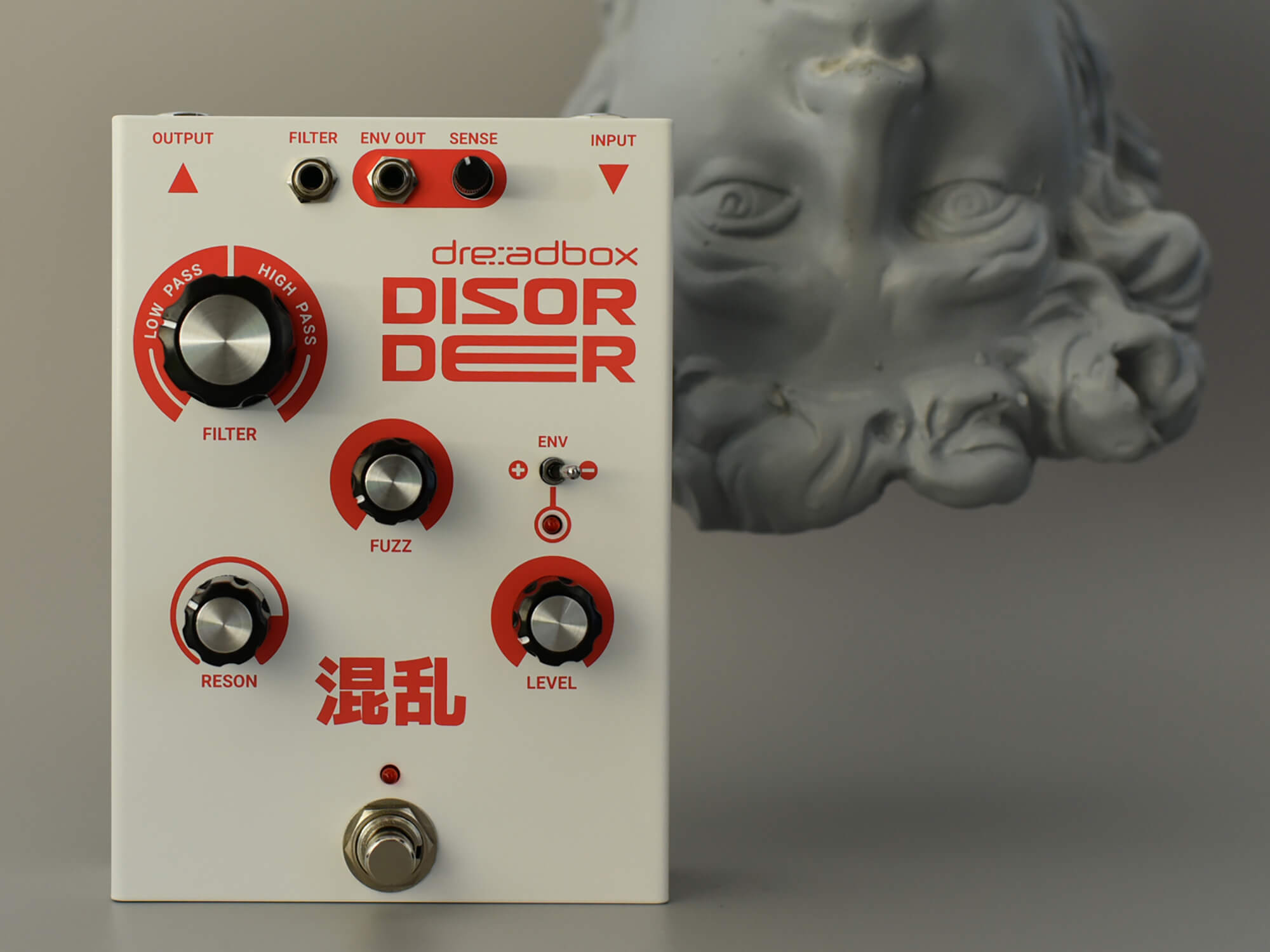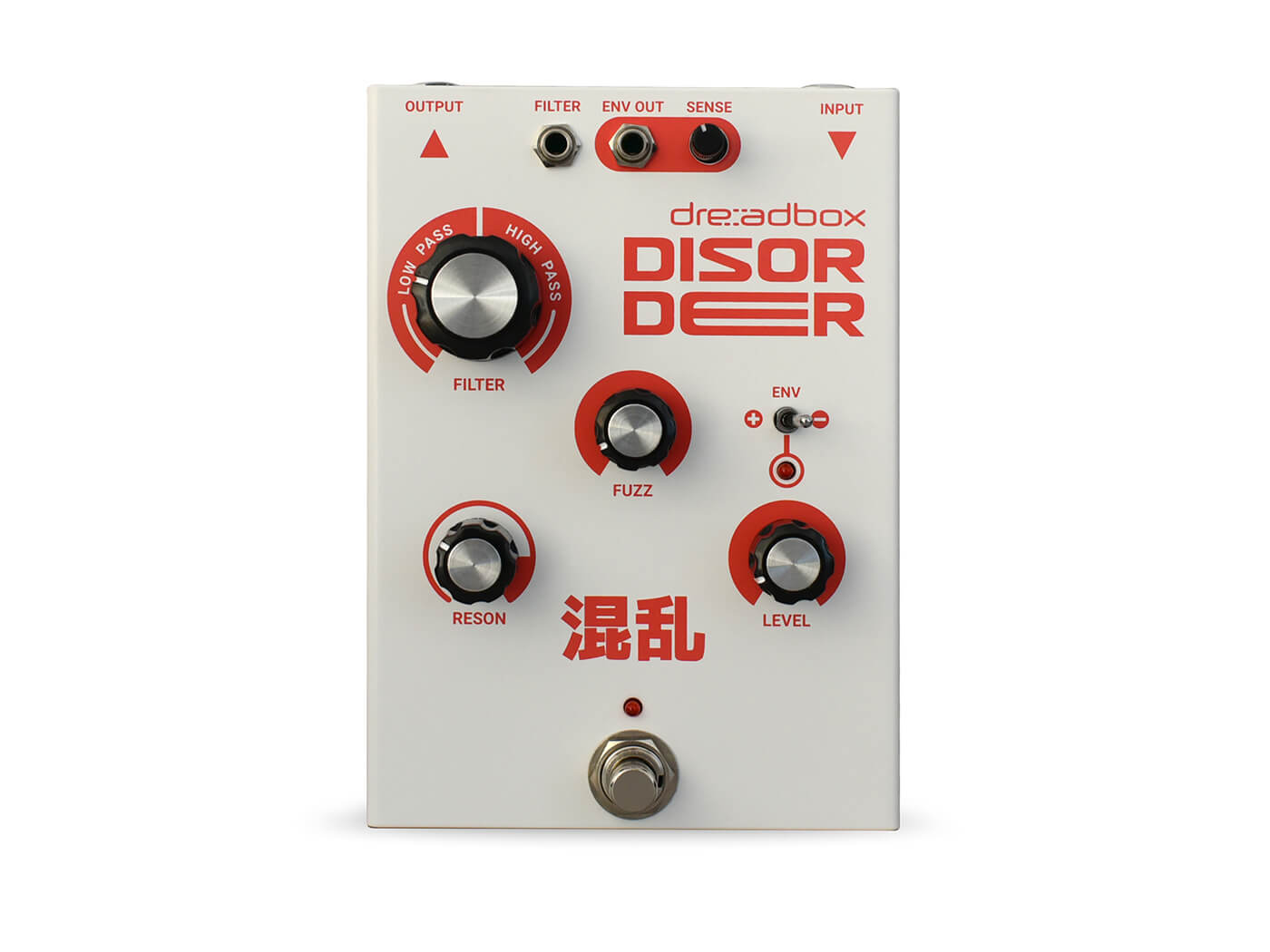Related Tags
Dreadbox Disorder review: Could this fuzz pedal be your passport to analogue synth mayhem?
Built to explore the extremities of guitar tone, this Greek-made unit combines high-gain fuzz with twin filters and envelope-following sweeps.

Review Overview
Our rating
8
Our verdict
Watch out, stompbox makers: the synth people are coming! Or, in the case of Dreadbox, the people who used to make pedals but then turned to synths are coming back again… and this time they’re serious.
Originally known as Freaqbox, this Greek company started out making guitar effects a decade ago – including a primitive version of this, the Disorder fuzz and envelope filter. Tragically, they soon succumbed to the lure of designing analogue synthesizers instead, but now it seems the time has come for a second foray into the six-string world.
For the reborn Disorder, that means the same basic idea as before – full-on CMOS fuzz with a separate envelope-following filter circuit – but now in a much more polished and full-featured package.
So what can we expect? Well, CMOS fuzz is all about uncompromising square-wave buzziness, and envelope filters are all about tonality that responds to the changing level of the incoming signal. Put the two together and it should get more than slightly gnarly.
There are a few clues to Dreadbox’s synthy legacy, most notably the CV sockets at the top for pairing up with other modules, but this is not a tricky pedal to navigate for us plank-whackers: alongside controls for fuzz and output level there’s just a large knob for setting the filter cutoff frequency, with low-pass to the left and high-pass to the right, plus filter resonance and sensitivity.
A switch lets you set the envelope to move up or down, and there’s also an internal trimpot for adjusting the input gain – but access to that involves removing the input and output jack nuts, so we’ll be hoping the factory setup gives us all the sounds we’re after.

In use
Lowering yourself gently into the Disorder is a simple matter of starting with the sensitivity at zero and the cutoff frequency pointing straight up – this is bypassing all the filter stuff for a pure fuzz experience. Or should that be two pure fuzz experiences?
With that central knob set anywhere past noon it’s thick and gated, spluttering in and out of silence as boopy notes fade out and mighty chords surge in; but dial it down below the halfway point and the gate stays open for a surprisingly tasteful distortion that even, yes, responds quite nicely to turning the guitar’s volume down a bit.
The next step is to start fiddling with the filter control, which offers infinite shades of menacingly dark fuzz to the left and gradually carves out bass as you wind it to the right. There are lots of tasty tones available here, and we only wish Dreadbox had included an expression pedal input – instead of those daft synth sockets, maybe – so we could sweep through them on the fly.
As it is, the only way to get those filters moving is to open up the envelope. We do this with a delicate twist of the sensitivity knob – and ‘delicate’ is the key word, because turn it too far and even a gently strummed chord will push things beyond the audible frequency spectrum. That can actually be quite fun – hit a big E-major then wait while it slowly materialises from the high-frequency heavens like a descending UFO – but for the most part you’ll want to be restrained with this setting. And even then you’ll still need to be careful with your playing dynamics, or flatten out the incoming signal with an overdrive or compressor.
Between the two filters, the up/down switch and the resonance control, there are numerous sounds to explore – from simple autowah effects to much more extreme stuff that might make you think your guitar has morphed into an analogue synth from the early 80s.
If you find that thought horrifying, step away from the Dreadbox Disorder and don’t look back; if you find it intriguing, we thoroughly recommend taking this thing for a spin.

Key Features
- PRICE €142
- DESCRIPTION Analogue fuzz and envelope filter pedal, made in Greece
- CONTROLS Filter mode (high or low pass) and cutoff, fuzz, resonance, output level, envelope sensitivity, envelope up/down switch
- FEATURES CV filter in and envelope out sockets; buffered bypass, powered by nine-volt mains supply only
- DIMENSIONS 142 x 100 x 53mm
- CONTACT dreadbox-fx.com
Like this? Try these
- AC Noises Urla £229
- Electro-Harmonix Micro Synth £225
- Walrus Audio Kangra £179
